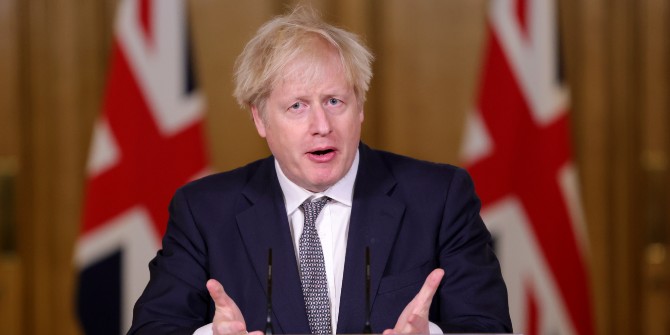Walking in a city is a basic right. But planners have often ignored pedestrians – something that is starting to change during the pandemic. Alexandra Gomes (LSE) asks if a new tool can help them make the case for better infrastructure and less space for cars.
Walking is a basic right for any city dweller. It is not just good for health and non-polluting: the social and economic benefits are very considerable. Walking highlights the senses and relaxes the mind. It is the one activity that gives you a full appreciation of all the dimensions of urban space. While only some people use cars, public transport, or bikes, nearly everyone walks, and walking is free.
For a long time walkability has been a planning afterthought in many parts of the world. But during the first wave of COVID-19 lockdowns, offices and shops closed and people left their cars parked. In many cities CO2 levels fell substantially, and some cities and local authorities improved walking infrastructure to allow for physical distancing. In cities such as London walking infrastructure already existed (though it was certainly in need of improvement), but in others walkways do not exist or are almost fully occupied by cars. While COVID increased walkability, it also exposed the spatial inequalities in walking infrastructure.
Walking is particularly important if more people in cities are working from home. As they stay mostly local, they are less reliant on transport. This new way of life could trigger new ways of walking and socialising, to which cities will need to adapt their public spaces. Walking should be a priority for cities. Pedestrians should not need to avoid major streets due to their levels of pollution or because they are dangerous. With fewer cars, there is less congestion, less pollution, fewer car parking spaces, and more space and a better environment for walking. As walkers, we should demand wider walkways, less clutter, and more space for trees and other infrastructure that lets us socialise outside.

Motorised transport is a major contributor to climate change. With increasing volumes of travel, even improvements to vehicle efficiency are not offsetting global emission levels. Walking can create cleaner cities by replacing motorised travel, in particular on short trips. Cities and local authorities can play a crucial role in this change, through improvement to the physical infrastructure or policy changes.
However, a persistent policy and research bias still under-explores walking. Tools and data have hitherto been lacking. The recent launch of the Pedestrian First web tool by ITDP allows a “simple” way to help in overcoming this bias. Pedestrians First is a website that merges information with audit tools to measure walking-related infrastructure at the city, neighbourhood and street level. It shows that no single factor has a predictable impact on walkability, and any assessment has to consider the strong inter-dependent relationship between urban planning (mixed use and densities), urban design, and individual behaviour (such as car use, for example).
The four audit tools (1) view city measurements, (2) measure inclusive city transit, (3) examine a neighbourhood and (4) visit a street. They introduce the importance of measuring walkability at different scales, alongside an open access methodology. These tools are constructed from open access data, and unlike similar tools draw on a series of tick-box based indicators and self-surveys that can be used by the ordinary citizen, academics, planners or policy makers. Measuring, comparing, and evaluating are the fundamental tools which citizens can use to demand changes, or to provide policy makers with a framework to make decisions. The website includes policy recommendations, checklists, and guidelines for action and change.
However, as with any other methodology there are limitations, some of them recognised on the website. Like any open access tool, the pre-defined indicators do not always allow for proper differentiation between the unique conditions in different cities. The reliance on open access data, which is not available for some areas of the world) might also limit some of the city level analysis. Another drawback is the report’s emphasis on babies, toddlers, and their caregivers, to the detriment of the specific needs of the elderly and people with disabilities.
Nonetheless, tools like these will hopefully be an important asset for those interested in walkability, and it will be interesting to see how Pedestrian First is used.
This post represents the views of the author and not those of the COVID-19 blog, nor LSE.






Hi Alexandra. Hope you are well. I have read your article with specific interest in the public and pedestrianised realm. I have worked with Richard Rogers at RSH+P in London for a very long time and I am very interested in the subject of pedestrianisation of cities. I am currently in HK and I am a member of the Hong Kong Institute of Urban Design. I have recently written a paper on Liveable Cities for HKIUD. I am a member of the Urban Plan Group for ULI and I am the founder of an on-site forum called HUBS that provides insights into place making for high density cities. I would like to find out more about your research and the mentioned potential tools. My profile is on LinkedIn and please feel free to get in touch to see if we could explore possibilities for future collaborations. Best Regards, Dennis